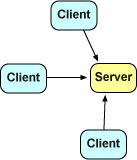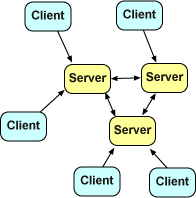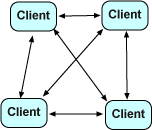|
*:48 Electronic Mail and Computer Mediated Communication
Exam 1998-12-19 You can submit the exam in Swedish or English, but if you want the text of the exam questions in English, you should notify Jacob Palme at least two weeks in advance. Examen på svenska på andra sidan. Please write your e-mail address on the outside of the folder with your exam. Allowed documents during the exam: Ordinary language dictionaries to and from Sweden and English. To pass this exam, you will have to have a certain minimum number of points separately on question 1-2 and on question 3-4. Carefully read the questions and check that your answer is really an answer to the question. As an example, in one exam a question was "Describe important characteristics with non-simultaneous computer conferencing systems, and which makes them different from electronic mail systems". One student gave a thorough description of the differences between computer conferencing and face-to-face meetings. Such an answer will regrettably give no points at all! This exam is for 3.5 points. Those who have enrolled in thus course segment in 1996 or earlier, can choose to take the course as it was specified then, by only answering question 2-4 in the exam and only getting 2.5 points. If this is the case, write this very clearly as an answer to question 1 of the exam. You can reach Jacob Palme for questions about unclear questions in the exam, between 13 and 14 hours at phone number 664 77 48. If you have earlier passed the course INT2, you shall only reply to question 3-4 and will only get 2 points in this exam. If this is the case, specify this clearly as your answer to question 3-4 in the present exam. |
|
No. |
Question |
Max. score |
||||||
|---|---|---|---|---|---|---|---|---|
|
1 |
Discuss so-called "flaming", suddenly too-intensive discussions in e-mail groups. What is the cause of the problem, and what can be done to relieve it? Reply:Causes: E-mail groups are often larger than face-to-face groups, and everyone can write whenever they want. Because of the lack of body language and voice inflection, the only way in which participants can indicate their agreement or disagreement is by writing a message. Solutions: Ethical rules, like "if you are angry, wait a day until you write" can help. A moderator can help by censoring incoming messages to a group, or by making summaries and statements like "now this issue has been discussed enough". Decision tools to collect the views of the participants without publishing a message from each of them can also help. |
6 |
||||||
|
2 |
Describe
the difference between quantitative and qualitative methods in social
science research, and how the difference will influence the results of
the research.
Reply:Quantiative methods are methods which produce numerical data. Quantitative research collects statistics, based on real data, observations or questionnaires. The research tends to answer already known questions. The results can be made reliable and representative of a population, but is sometimes shallow. Qualitative methods are based on deep interviews and long-time observations. Results are usually reported essayistically and not tabulated statistically. The results tend to give a deeper insight, but sometimes are less reliable and representive. Examples of qualitative methods are those used in ethnology (social anthropology). |
6 |
||||||
|
3 |
By "architecture" is meant the different computer processes, which communicate with each other within a particular application. Describe common architectures for groupware systems. Reply:
|
6 |
||||||
|
4 |
Why is the structure of directory systems and naming spaces often hierarchic? What is the advantages and disadvantages with this? Reply:Advantages:
The main reason for this is that it allows decentralization of the assignment
of new names, while still ensuring that all names are globally unique.
For every level in the name hierarchy, a different organization can
assign new subnames. For example, The "se" domain assigns
names like "su.se" and the "su.se" domain assigns
names like "dsv.su.se". Disadvantages: A disadvantage is that every object does not have a natural place in a hierarchical structure, and that the quality of maintenance will differ for different branches of the tree.
|
6 |


